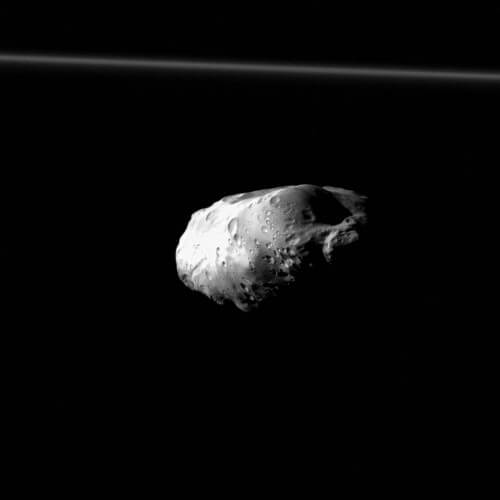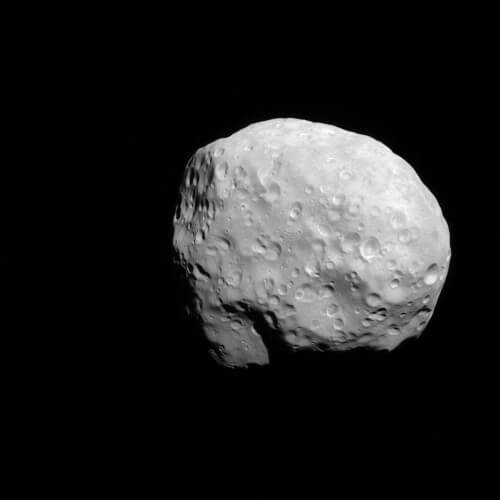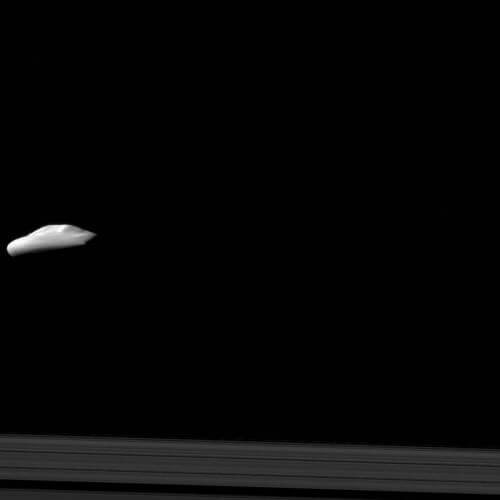In recent days, the Cassini spacecraft has launched detailed images of several of Saturn's moons - all of them were taken within a few hours of each other

Prometheus
In recent days, the Cassini spacecraft has launched detailed images of several of Saturn's moons - all of them were taken within a few hours of each other on December 6, 2015.
One of them was the moon Prometheus which was about 86 kilometers in diameter. In the picture you see the side of Prometheus that does not face Saturn. North Prometheus is pictured above. The image was taken in visible light using the Cassini spacecraft's narrow-angle camera.
The photo was taken from a distance of about 37 thousand kilometers from Prometheus when the sun is at an angle of 87 degrees. The scale is 220 meters per pixel. Prometheus orbits Saturn just inside the narrow F ring, visible at the top of the image.
Epimetheus

On the same day, Cassini also visited the vicinity of the moon Epimetheus, which is 116 kilometers in diameter. This is one of the highest resolution images of this small moon. The north of Amphitheus is also up. The image was taken in polarized green light using Cassini's narrow-angle camera.
The photo was taken from a distance of 35 thousand kilometers from Amphitheus, with the sun at an angle of 28 degrees. The scale of the image is 212 meters per pixel. The picture also shows two types of soil - dark areas and light and rocky areas. that the darker material falls down the slopes, and apparently has less ice content than the lighter material, which looks like bedrock. However, it is likely that the materials in both soil types are rich in water ice.
Atlas, almost running away

On that fruitful day, Cassini also passed by the moon Atlas, which is only 30 kilometers in diameter, and has a smooth ridge on its equator.
The view is on the side far from Saturn, and also in this picture the north is up. The image was taken in visible light with Cassini's narrow-angle camera. The picture was taken from a distance of about 32 thousand kilometers from Atlas and the sun at an angle of 83 degrees. The scale of the image is 190 meters per pixel.
Atlas orbits Saturn in an environment known as the Roche Division between the A and F rings in the outer part of the main ring system. The outer A ring is visible at the bottom of the image.
